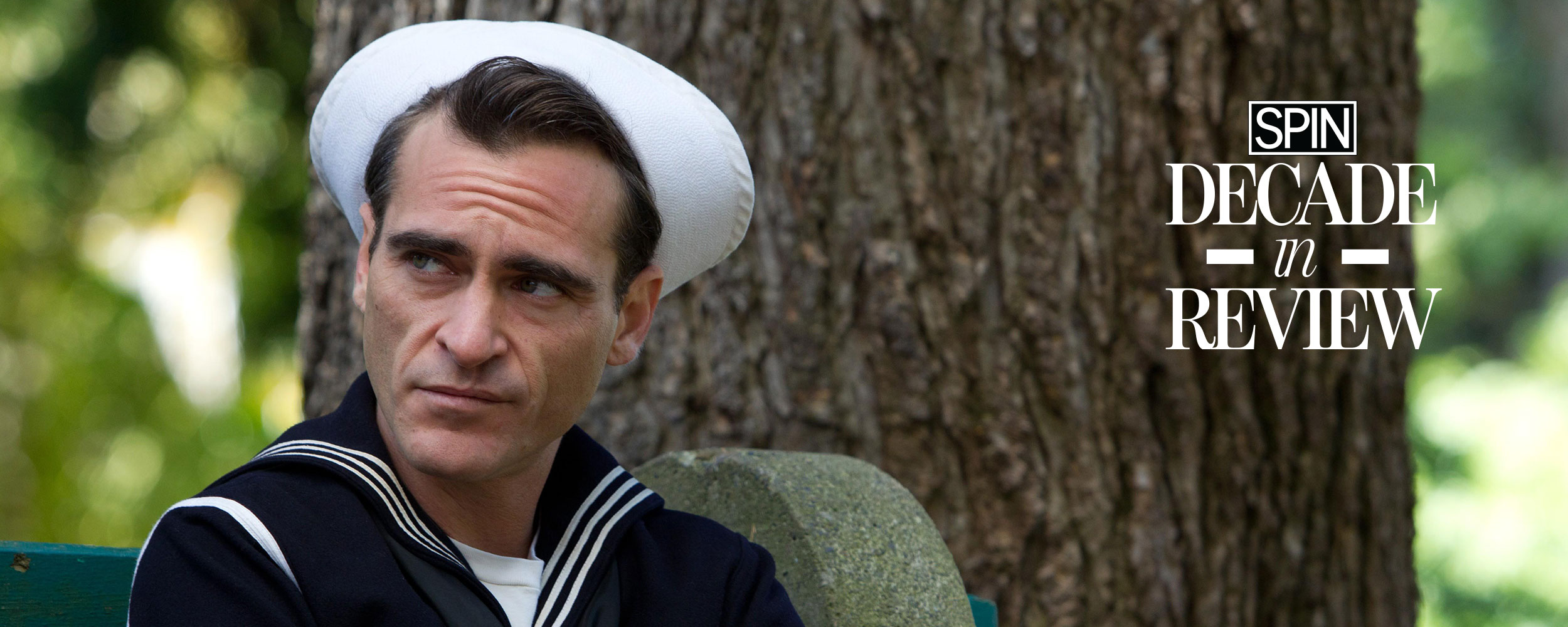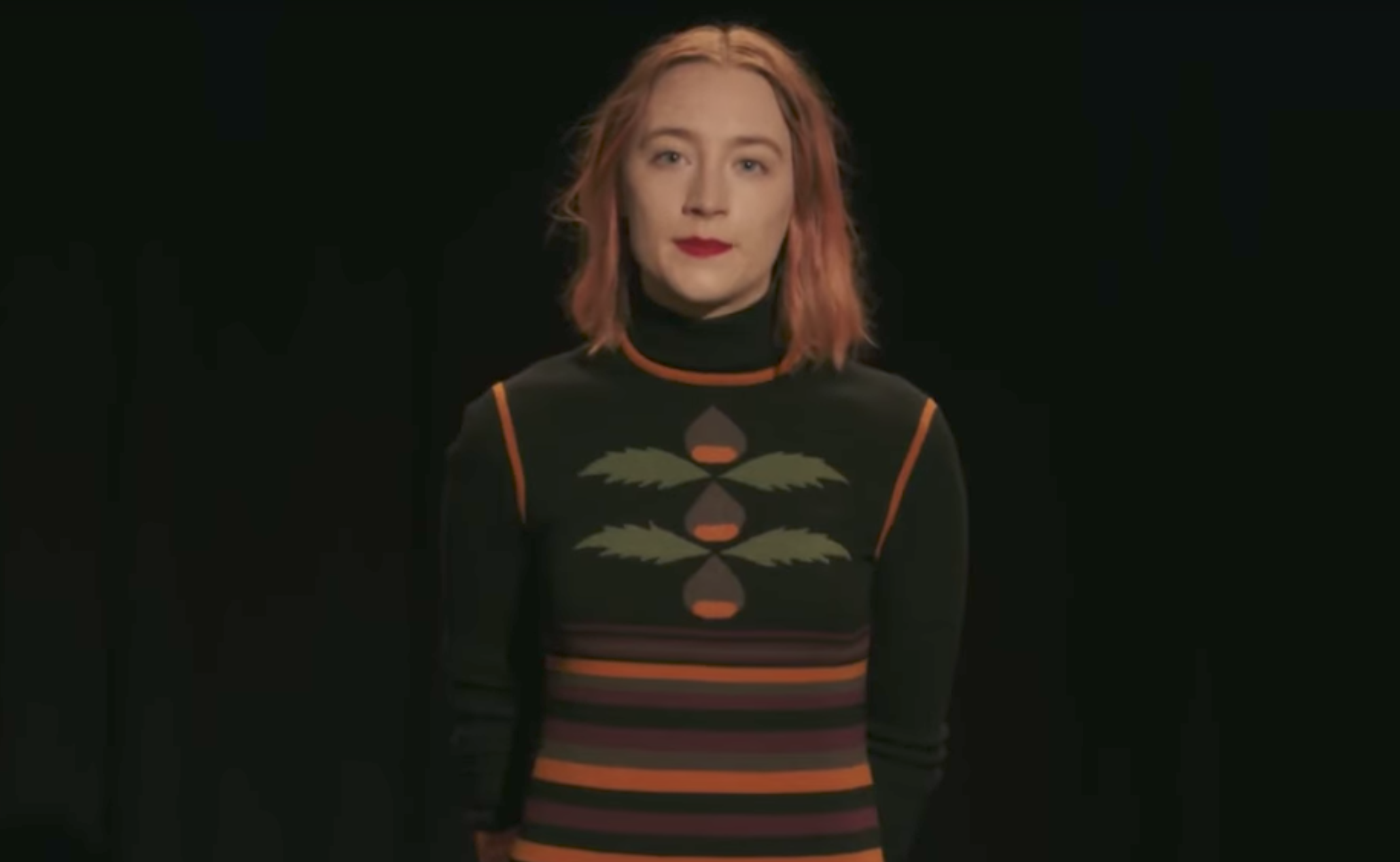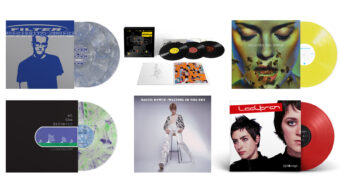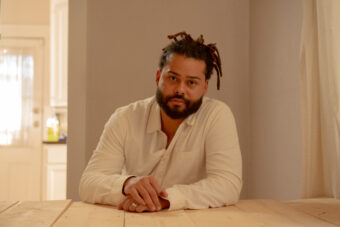Director Greta Gerwig’s playful use of pop music in Lady Bird, her very popular and poignant comedy about a young high schooler’s whirlwind of a senior year at a Sacramento private school, has been a cause for celebration among aging millennial fans who can relate to the song choice. This week it was revealed that Gerwig, in a move that seems like something her film’s single-minded, self-nicknamed protagonist would do, wrote charming personal letters to Dave Matthews, Alanis Morissette, and Justin Timberlake asking for the rights to use songs of theirs in the film. In the letters, she described her own experience coming of age with their music, relaying stories that largely took place in her high school years, and explained how the songs would help structure Christine “Lady Bird” MacPherson’s own Bildungsroman.
The pop songs in Gerwig’s movie function mostly as nostalgic touchstones. In the case of Dave Matthews Band’s “Crash,” it is a major plot point, prompting a moment of cathartic self-acceptance for Lady Bird, played by Saoirse Ronan, as she prepares to venture into the next phase of her life. But the music used most frequently in the film, outside of Jon Brion’s incidental music, has been less commented upon, though it interacts even more literally with the movie’s themes. Gerwig uses numerous songs by composer and musical theater giant Stephen Sondheim. Of particular importance are the songs from Merrily We Roll Along, his notorious 1981 Broadway flop that Lady Bird, her friend Julie, and her erstwhile boyfriend Danny (Lucas Hedges) perform in during the film. (We also see Danny perform “Giants in the Sky” from Sondheim’s more well-known show Into the Woods, and other selections from his Company and Anyone Can Whistle, during the auditions for the show.)
On the surface, Merrily serves simply as the perfectly cornball musical for Christine’s high school theater department to mount. The show is an aesthetic nightmare: The ensemble cast, initially revolutionary for only casting non-star teenagers, harmonize on inspirational anthem with rudimentary choreography, wearing primary-color T-shirts, fake facial hair, and budget age makeup. In a montage, Gerwig emphasizes the over-earnest silliness of the whole enterprise.

Also Read
30 Great Movies That Defined the 2010s
In a recent Miami New Times interview, though, Gerwig, who calls Sondheim “one of [her] favorite artists, period, of all time,” suggested a deeper dramatic resonance to her use of the show. She calls Merrily We Roll Along “a good mirror, in a way, for the movie that I was making.” In both the film and musical, she explains, there is a shared “sense of time tumbling forward (and, in the musical’s case, backward) but flying by faster than we can hold onto it.” Merrily is a coming-of-age story in reverse, spanning several decades, framed around the former composer Franklin Shepherd, played by Hedges’ character, who has left his friends–including his former collaborator and lyricist–in the dust for a career in Hollywood. In the show, Shepherd looks back, from the late ‘70s, to his more florid and creatively edifying earlier years.
Ultimately, ’80s Broadway audiences found the storytelling, with its excess of scene and costume changes and time jumps, elaborate enough to be incomprehensible. The show closed after only 16 performances, and in a light simulacrum of the show’s story, Sondheim and his producer Hal Prince, one of the most commercially successful duos in Broadway history immediately prior to that time, drifted apart. (The troubled story of the original production of the show is the subject matter of a worthwhile documentary from last year, Best Worst Thing That Ever Could Have Happened.)
Like Lady Bird, Merrily We Roll Along is about the promise and ecstatic entropy of youth, and the process of moving on from it, for better or worse. In a meta kind of way, so was the experience of bringing the original production of the musical to sadly imperfect fruition, with its young cast of enthusiastic non-stars. In Merrily, creative ambitions and wild pipe dreams are deferred and abandoned, but ultimately, old friends reunite to bask in nostalgia around the piano. All the major musical numbers, as with so many of the central scenes in Lady Bird, are either about looking backwards and forwards in life: “Good Thing Going,” “Growing Up,” “Not a Day Goes By,” “Our Time,” “Like It Was,” and of course, the title song.
Lady Bird is not told in flashback, but Christine’s life takes place in the shadow of two adults (her parents) who are struggling with their hindsight: feelings of regret and nagging perspective on their now-immutable decisions earlier in life, much like every character in Merrily We Roll Along. Certainly the tough and encrypted outlook of Christine’s mother Marion, played stunningly by Laurie Metcalf, is the central dynamic and complicating force in Christine’s life, provoking guilt and angry retaliation. In the end, Gerwig juxtaposes images of both women driving through Sacramento, making their lives feel, for a moment, like different stages in the same story.
More directly tied to Merrily and its bittersweet themes in the film is the character of Father Leviatch (Stephen Henderson), the director of the show who appears to be moved by it a bit too viscerally. He breaks into tears during introspective acting exercises during rehearsal, and sits dejectedly in the lobby after one of the performances, lamenting that the PTA-member-heavy audience “didn’t get” Sondheim’s notoriously hard-to-get show. A young cast member cruelly furthers a rumor that Leviatch lost a son to a drug overdose earlier in life, and has generally had a hard road of it. Briefly, we see him confiding in Marion, seemingly struggling with ambiguous depressive episodes that force him to leave the school.
There are other incidental, more surface-level parallels in approach between the film and musical. As in Gerwig’s firmly early-2000s-rooted scenes, cultural signifiers and sociopolitical signposts help signify time and place in Merrily, as the characters move into periods when the phrase “Lady Bird,” as the First Lady’s nickname, was ubiquitous. The Merrily youths, like the Lady Bird ones, experiment with weed. Vietnam eventually casts a pall over the proceedings, and Sondheim included a news broadcast. One thinks of the intermittent Iraq footage in Lady Bird, and Christine’s self-absorbed, performative radical of a would-be boyfriend Kyle (Timothée Chalamet), who buries his head in a copy of Howard Zinn’s A People’s History of the United States in as many public places as possible. As in Lady Bird, where block-like cell phones that are the current craze and status symbols, fashion and technology changes are meaningful in Merrily. At one point, one of Sondheim’s characters turns out to be the inventor of the answering machine–also, of course, the medium for Christine’s cathartic final monologue in Gerwig’s movie.
Merrily We Roll Along also traces the story of friends pursuing their dreams in New York, which is exactly what Christine longs to do throughout Lady Bird. At the end of the film, she finally embarks on that journey; Merrily, which is told in reverse, also ends bittersweetly with the central characters as wet-behind-the-ears Manhattanites, attempting to refashion themselves in the big city. Things will presumably not turn out quite as Christine plans, just as they don’t for the central group of estranged friends in Merrily We Roll Along. But as both the movie and musical aim to affirm, our flawed lives are beautiful things that become enriched even when we can’t sense it, meaningful and full how imperfect or even seemingly botched they may seem to be in the oppressive moment. “I think that balance of joy and ache is something that Sondheim is so good at capturing and something that I wanted Lady Bird to have,” Gerwig told The Miami New Times. “I hope it feels hilarious and heartbreaking in that same way.”
https://open.spotify.com/embed/album/2ouySS4WHFplUHtwduvPKx
Correction: An earlier version of this article claimed that Hal Prince had collaborated with Sondheim on the writing of Merrily We Roll Along, instead of working solely as the producer. Though Prince did work hand-in-hand with Sondheim in bringing the show to fruition, he was not a co-writer or lyricist for the show. Sondheim wrote the music and the lyrics, and George Furth wrote the book.




